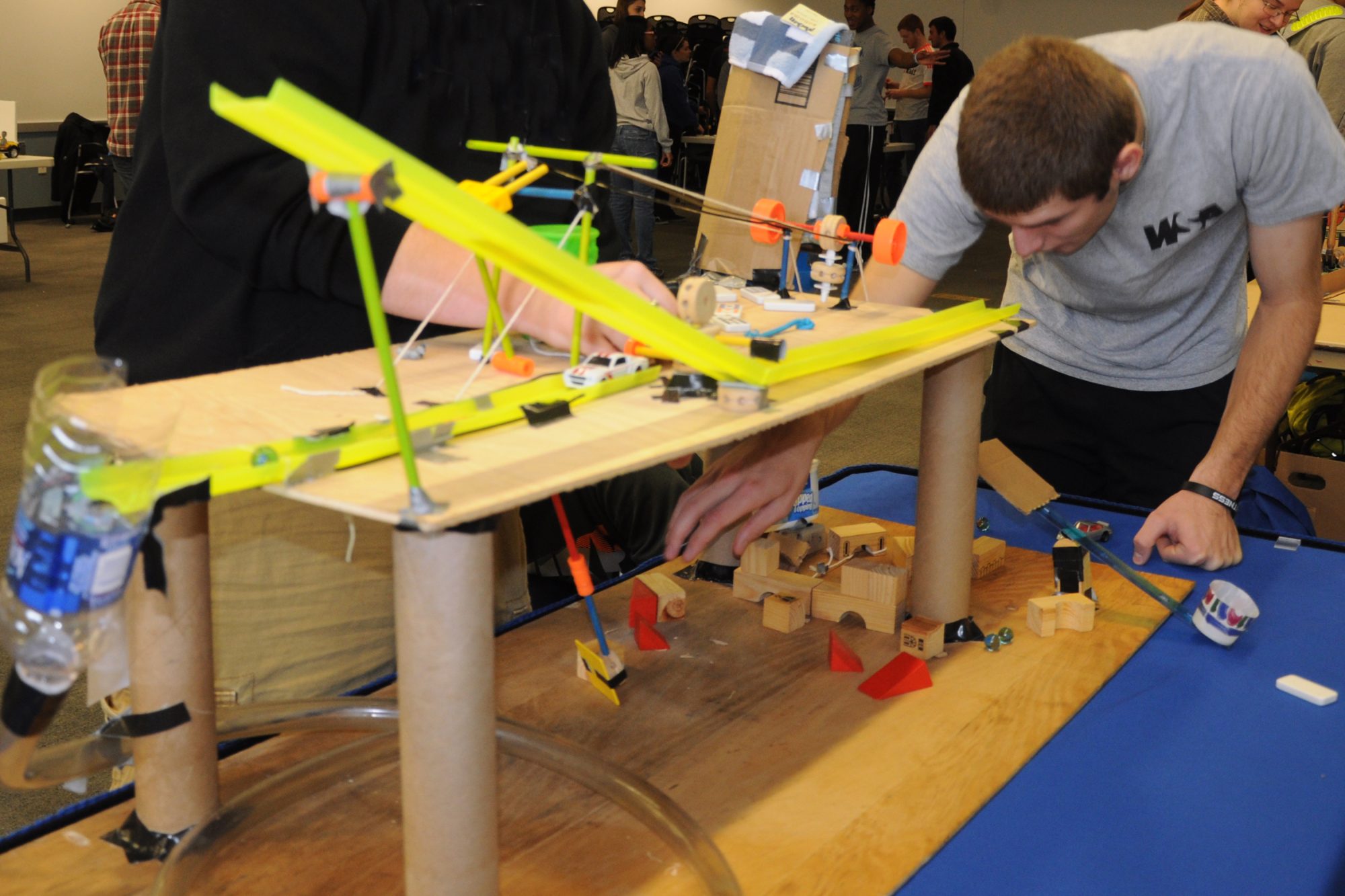
Even if you don’t know it by name, it’s likely that somewhere in pop culture, you’ve seen the elaborate contraptions known as “Rube Goldberg machines.” After a recent competition in ESC 100 Introduction to Engineering, SUNY Poly students are more familiar with the concept than ever.
A Rube Goldberg machine is a device designed to perform a simple task through multiple steps. Named for a 20th-century cartoonist and inventor known for his cartoon depictions of such devices, it has become a popular gag in pop culture and the media. The assignment for engineering student groups was to use materials that could be found in an average household to create a device that would use seven to eight steps to knock a ping pong ball into a goal. Students used dominoes, toy cars, string, plastic cups, balloons—even a plastic toy dinosaur.
“I want them to be creative and to realize the importance of teamwork,” said Steven Wei assistant professor of civil and environmental engineering. “In engineering, you sometimes have to design within restraints. A design can be magnificent without spending a fortune.” The Rube Goldberg exercise was the final project of the semester for the engineering students, Wei said, and helps to bring together all of the aspects of engineering they’ve learned over the whole semester while emphasizing the importance of teamwork.
“If we didn’t have teamwork, we could not pull this off,” said Cassadi Williams, a freshman from Boonville, N.Y. “During the whole setup process, one person has to be doing something while someone else is doing another thing at the same time.”
A trio of faculty judges—Wei, Mason Somerville and Andy Wolfe—watched as the students put their contraptions into motion, judging each on originality, presentation and final execution. Some went off without a hitch, prompting cheers. Other attempts did not fare so well.
“It takes a lot of patience,” Williams said. “With this, if one thing doesn’t work, the whole thing doesn’t work. I can just imagine if one thing went wrong with a bridge. The whole thing would have issues.”
Wei was very happy to see how much thought and creativity went into each device, as well as just how adept all the students were in working together to make each machine possible. “I believe that sometimes we tend to underestimate the students’ potential,” he said. “They certainly do rise to the occasion.”
